SICK Luminaires

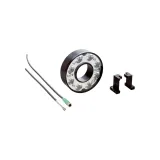
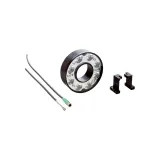
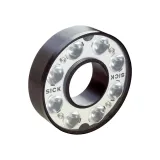
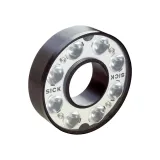
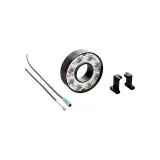


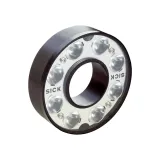
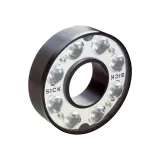
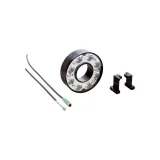
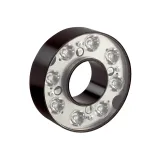
sick luminaires for machines and production floors
Engineered housings and driver platforms that stay stable through heat, dust, and vibration. Bodies come in slim linears for aisles and enclosures, compact area heads for cells, and high-candela bars for machine interiors. Output classes typically span 1.2–18 klm per unit; neutral/cool whites (3000/4000/5000 K) keep color rendering predictable across shifts. Installers get generous gear bays, stainless fasteners, compression glands sized to jacket OD, and clear terminal legends that survive solvents.
sick industrial lighting range and form factors
Linear IP65/IP66 bars in 300–1500 mm lengths handle racking, conveyors, and long guards. Square and round area luminaires serve assembly zones and low slabs. Machine-vision skirts add controlled spill for cameras without flare. Mounts include swivel/yoke, T-slot adapters for extrusions, and rigid standoffs for panels and guards; safety-wire points are standard on larger heads. Through-wiring options simplify daisy-chains along frames.
sick led luminaires optical and electrical design
Efficacy lands around 135–180 lm/W depending on optic and CCT. CRI 80 is the baseline; CRI 90 variants support inspection and color-critical work. Optics: wide (100–120°) for uniform layers, narrow/aisle (30×90°) to drive lux down pick faces, and diffused caps for low-UGR near screens. Drivers run 220–240 V AC or 24 V DC (machine lights), PF ≥0.95 with THD ≤10–15 % at nominal load. Surge protection commonly 4–6 kV L-N and 6–10 kV L/N-PE on mains models. Thermal paths use finned sinks or metal cores with separated driver bays; lifetime is typically L80/L90 at 50–100k h with TM-21 projections from LM-80 data. Ambient ratings: −30…+45/55 °C by SKU. Ingress/impact: IP65–IP67 and IK08–IK10 for cages and loading zones.
Technical specifications and standards
Safety per IEC/EN 60598-1/-2 series; photobiological to EN 62471; EMC to EN 55015 and EN 61000-6-x; insulation and creepage/clearance sized for industrial mains. Flicker is controlled via high-frequency drivers; specify PstLM/SVM where cameras or machine vision operate. Control choices: ON/OFF, 1–10 V, DALI-2, and sensor-ready ports; emergency pods (Li-Fe 1–3 h) with self-test are available on corridor/egress variants.
Applications and compatibility across cells
Packaging and intralogistics: aisle optics keep lux on the pick face while holding energy down. Machine tools: narrow bars inside doors avoid glare on glass; tough housings resist coolant mist. Food and beverage: sealed lenses, stainless hardware, and smooth-face housings clean quickly. Inspection benches: CRI 90 with diffused caps reduces specular hotspots. Cold rooms: drivers validated for low-temperature start. For VFD-heavy halls, guard data links and sensor runs with divider trunking next to luminaires.
sick machine lights task layers and mounting
24 V DC bars and sticks bolt to extrusions and door frames, aimed with indexed swivels that don’t drift after cleaning. High-candela variants punch through steam and spray; slim bodies avoid tool interference. Quick-disconnect M12 tails let technicians swap engines without disturbing conduit. Where doors slam, pick anti-vibration inserts and double-clamp brackets.
sick work area lighting glare and ergonomics
Keep UGR sensible near HMIs and microscopes: use prismatic diffusers or lower-luminance engines and raise pole density rather than chasing narrow beams. Choose 4000 K for most assembly, 5000 K where visual “punch” helps at distance, and 3000 K in break areas to avoid fatigue on night shifts. Document target lux and spacing/height tables so maintenance can replace like-for-like without re-aiming.
sick technical luminaires integration and controls
Sensor sockets accept presence/daylight nodes for setback profiles; DALI-2 enables group logic and energy metering. Plug-in emergency kits land on the same yoke as the driver tray for fast service. Wiring aligns with the brand’s IO-Link masters, push buttons, and terminal blocks: route SELV separately, bond shields 360° at entry plates, and use keyed connectors to keep polarity consistent. Where CMS is planned, reserve Zhaga/NEMA ports on exterior/transition heads.
Selection criteria for B2B buyers
Start with maintained lux and task plane height, then pick optic by geometry: 60° for height and punch, 90–120° for open floors, 30×90° for aisles. Lock CCT by zone (4000 K assembly, 5000 K long throws, 3000 K rest areas). Specify CRI 90 at QA benches. Check driver interface against the site backbone (1–10 V or DALI-2) and reserve 20–30 % thermal headroom for hot bays and sealed covers. Confirm IP/IK versus cleaning regime and forklift traffic. For payback, choose presence/daylight and high-efficacy SKUs; document flicker limits where cameras run. If projects bundle lighting, controls, and emergency, note that sick led lighting systems can be scheduled as a single kit per area to keep spares lean.
Advantages of working with Bankoflamps
We align optic codes, lumen classes, and control types to your bay counts and machine list, then show live EU stock before lifts or shutdowns are booked. Quotes land in about an hour with EAN/MPN so CCT, CRI, surge level, IP/IK, and mount kits don’t drift mid-phase. Your portal displays lead times, shipment status, and downloadable price files; pricing windows track project gates. Approved clients can use post-payment up to 30 days. We consolidate by cell/aisle to cut freight and night work, and your account manager cross-checks driver interface, emergency autonomy, sensor ports, tc limits, bracket geometry, and gland threads against your drawings—so pallets arrive site-ready and crews spend their time installing, not re-picking.